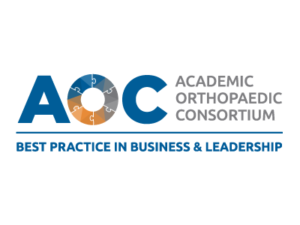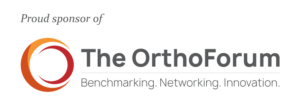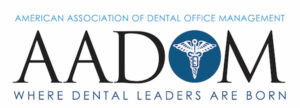Healthcare organizations across the country face a remarkable paradox: while they exist solely to care for patients, many struggle to systematically incorporate the patient’s voice into their operational fabric. The disconnect isn’t for lack of caring. Rather, it stems from deeply entrenched systems designed around clinical workflows, regulatory requirements, and financial imperatives that inadvertently push patient perspectives to the periphery.
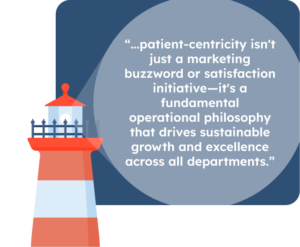 Patient-centricity isn’t just a marketing buzzword or satisfaction initiative—it’s a fundamental operational philosophy that drives sustainable growth and excellence across all departments.
Patient-centricity isn’t just a marketing buzzword or satisfaction initiative—it’s a fundamental operational philosophy that drives sustainable growth and excellence across all departments.
The Evolution of Patient Voice in Healthcare
Twenty years ago, patient feedback largely consisted of paper comment cards and the occasional formal complaint. Fifteen years ago, we saw the introduction of standardized HCAHPS surveys. Five years ago, online reviews began capturing unfiltered patient sentiments at scale.
Today, the patient voice exists across multiple channels simultaneously: structured surveys, online reviews, social media conversations, direct feedback, and increasingly sophisticated patient-reported outcome measures. The challenge has shifted from simply collecting feedback to strategically implementing insights across the organization.
Why Traditional Patient Experience Initiatives Fall Short
 Many healthcare organizations have made well-intentioned efforts to become more patient-centered. Yet a surprising number of these initiatives ultimately underdeliver. The reasons are instructive:
Many healthcare organizations have made well-intentioned efforts to become more patient-centered. Yet a surprising number of these initiatives ultimately underdeliver. The reasons are instructive:
- Departmental Silos: Patient feedback typically lands in marketing, patient experience, or quality departments without structured pathways to operations, clinical teams, or administrative functions.
- Reactive vs. Proactive Posture: Many organizations primarily use patient feedback for damage control rather than proactive service design.
- Superficial Implementation: Changes focus on amenities and service recovery rather than fundamental process redesign.
- Misaligned Incentives: When financial incentives don’t align with patient-centered behaviors, organizational inertia prevails.
- Feedback Fatigue: Staff become desensitized to feedback that feels disconnected from their daily work.
The Patient-Centric Maturity Model
Before outlining implementation strategies, it’s helpful to understand where your organization falls on the patient-centricity spectrum. This maturity model provides a framework for assessment:
1: Collection-Oriented
- Gathers feedback primarily for compliance and marketing.
- Patient voice resides exclusively in siloed departments.
- Limited distribution of insights beyond mandatory reporting.
- Reactive approach to negative feedback.
2: Insight-Oriented
- Analyzes patterns in feedback across channels.
- Shares aggregated insights with leadership.
- Applies inconsistent improvement efforts.
- Creates designated responsibility centers for experience.
3: Action-Oriented
- Establishes formal processes for addressing systemic issues.
- Creates cross-functional improvement teams.
- Incorporates patient voice into some operational decisions.
- Measures improvements in targeted areas.
4: Culture-Oriented
- Patient voice influences decisions at all organizational levels.
- Feedback systems are fully integrated with operational workflows.
- Staff at all levels can articulate the impact of their role on patient experience.
- Patient insights drive strategic planning and resource allocation.
5: Innovation-Oriented
- Patient partnerships shape service design from concept through implementation.
- Experience metrics carry equal weight to financial and clinical metrics in decision-making.
- Continuous experimentation based on patient insights.
- Patient voice shapes not just current operations but future service development.
Most organizations find themselves between levels 2 and 3. The remainder of this article focuses on practical frameworks for advancing toward levels 4 and 5.
Creating an Organizational Blueprint for Patient Voice Integration
 Transforming patient insights into operational reality requires a deliberate organizational architecture. The following framework has proven effective across organizations ranging from small practices to multi-state health systems.
Transforming patient insights into operational reality requires a deliberate organizational architecture. The following framework has proven effective across organizations ranging from small practices to multi-state health systems.
1. Creating a Central Nervous System
The foundation of patient-centricity is a centralized system that collects, analyzes, and distributes patient feedback from all channels. This Insight Hub serves as the organization’s “central nervous system” for patient voice.
Key components include:
- Unified Data Collection: Integrating surveys, reviews, social listening, direct feedback, and patient-reported outcomes into a single repository
- Automated Analytics: Using natural language processing and sentiment analysis to extract meaningful patterns
- Real-Time Distribution: Creating automated workflows that route insights to relevant stakeholders based on content and urgency
- Closed-Loop Tracking: Documenting actions taken and measuring their impact
Many organizations initially cobble together multiple systems to create this function. However, integrated platforms have emerged to streamline these processes, allowing organizations to focus on implementation rather than data management.
2. Making Insights Actionable
For patient insights to drive change, each department needs structured processes for receiving, processing, and acting on feedback. Successful organizations create what might be called “departmental receptor networks” with clear roles and responsibilities:
- Insight Champions: Designated individuals within each department responsible for translating patient feedback into action plans
- Standing Agenda Items: Regular review of patient insights in departmental meetings
- Action Protocols: Standardized frameworks for evaluating and implementing changes based on feedback
- Success Metrics: Department-specific measures that track implementation progress
3. Creating Accountability
For patient insights to truly influence organizational behavior, leadership must visibly prioritize and model patient-centricity. This requires:
- Executive Dashboards: Leadership-level visibility into patient insights and implementation metrics
- Resource Alignment: Budget and staffing decisions that reflect patient-identified priorities
- Recognition Systems: Visible celebration of successful patient-centered improvements
- Personal Connection: Regular executive rounding and direct engagement with patients
4. Making It Stick
Sustaining patient-centricity requires embedding it in the organization’s cultural DNA. Effective cultural reinforcement includes:
- Hiring Priorities: Selection criteria that emphasize patient-centered values
- Onboarding Immersion: Initial training that emphasizes the patient perspective
- Continuous Education: Ongoing learning opportunities focused on patient experience
- Storytelling: Regular sharing of patient stories in multiple formats
- Visual Reminders: Environmental cues that keep patient perspectives top of mind
Implementing at Different Organizational Levels
 Patient-centricity manifests differently across organizational levels. Here’s how to operationalize it at each tier:
Patient-centricity manifests differently across organizational levels. Here’s how to operationalize it at each tier:
Front-Line Staff Implementation
For those with direct patient contact, patient-centricity becomes tangible through:
- Daily Huddles: 5-minute meetings that highlight recent patient feedback
- Service Recovery Authority: Empowerment to address issues in real-time
- Feedback Loops: Mechanisms for staff to share patient insights with leadership
- Skill Development: Training in communication, empathy, and service excellence
Mid-Level Management Implementation
Department managers and supervisors serve as critical translators between strategy and execution:
- Process Mapping: Documenting patient journeys to identify friction points
- Performance Integration: Incorporating patient-centered metrics into staff evaluations
- Resource Advocacy: Securing tools and training needed for patient-centered care
- Cross-Functional Collaboration: Breaking down silos between interconnected departments
Executive Leadership Implementation
C-suite and senior leaders create the conditions for patient-centricity through:
- Strategic Prioritization: Explicitly placing patient experience among top organizational goals
- Investment Decisions: Allocating resources toward patient-identified needs
- Accountability Systems: Creating transparency around patient-centered metrics
- External Messaging: Consistently emphasizing patient-centricity with stakeholders
Technology as an Enabler, Not a Solution
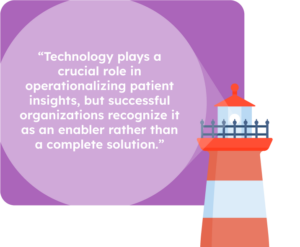 Technology plays a crucial role in operationalizing patient insights, but successful organizations recognize it as an enabler rather than a complete solution. Effective technology implementation focuses on:
Technology plays a crucial role in operationalizing patient insights, but successful organizations recognize it as an enabler rather than a complete solution. Effective technology implementation focuses on:
- Workflow Integration: Embedding patient feedback tools within existing systems
- Accessibility: Making insights available to stakeholders at their point of decision
- Actionability: Translating data into clear next steps
- Measurement: Tracking both implementation actions and outcomes
Modern platforms are evolving beyond simple survey tools to create integrated ecosystems that connect patient feedback directly to operational workflows. These systems can automatically route specific types of feedback to appropriate departments, track implementation progress, and measure the impact of changes.
Common Implementation Pitfalls and How to Avoid Them
 Organizations committed to patient-centricity often encounter predictable obstacles. Being aware of these challenges helps navigate around them:
Organizations committed to patient-centricity often encounter predictable obstacles. Being aware of these challenges helps navigate around them:
Pitfall #1: The Echo Chamber
This is when feedback only circulates among patient experience professionals without reaching operational decision-makers.
Solution: Create structured dissemination pathways that push relevant insights to each department with clear expectations for response.
Pitfall #2: Analysis Paralysis
When organizations continuously collect and analyze data without moving to action.
Solution: Establish decision thresholds that trigger automatic action planning when certain conditions are met.
Pitfall #3: The Measurement Trap
When metrics become ends in themselves rather than indicators of progress.
Solution: Balance quantitative measures with qualitative understanding through patient stories and direct engagement.
Pitfall #4: Initiative Overload
This happens when multiple patient-centered projects compete for the same resources.
Solution: Create a prioritization framework that focuses efforts on high-impact, high-feasibility improvements.
Pitfall #5: The Implementation Gap
When well-designed initiatives fail to change front-line behaviors.
Solution: Build implementation plans that address knowledge, motivation, and system barriers simultaneously.
Starting Your Transformation Journey: Practical First Steps
Transforming organizational culture doesn’t happen overnight, but these practical first steps can initiate momentum:
- Assess Your Current State: Honestly evaluate where your organization falls on the Patient-Centric Maturity Model
- Consolidate Feedback Channels: Begin creating your “Insight Hub” by connecting disparate sources of patient feedback
- Identify Early Champions: Find naturally patient-centered individuals across departments who can lead initial efforts
- Create Visibility: Use simple dashboards that make patient feedback accessible to all stakeholders
- Start Small: Select one department or location for a patient-centricity pilot program
- Capture Wins: Document early successes to build momentum and demonstrate value
- Learn and Adapt: Use initial experiences to refine your approach before broader implementation
The Future of Patient-Centricity: Beyond Feedback
As healthcare continues to evolve, patient-centricity is expanding beyond traditional feedback mechanisms. Forward-thinking organizations are exploring these frontiers:
- Co-Design Methodologies: Involving patients directly in service and facility design processes
- Predictive Analytics: Using AI to anticipate patient needs based on behavioral and clinical data
- Self-Directed Experience: Creating tools that allow patients to customize their own care journeys
- Social Determinant Integration: Incorporating broader life factors into personalized care approaches
These approaches represent the leading edge of patient-centricity, where organizations move from merely responding to feedback to fundamentally redesigning care delivery around patient needs and preferences.
Conclusion: The Organizational Imperative
 As healthcare becomes increasingly consumer-driven, operationalizing patient insights isn’t just a service excellence strategy—it’s an organizational imperative. Organizations that systematically integrate patient perspectives into operational decisions create sustainable advantages in patient acquisition, retention, and ultimately, clinical outcomes.
As healthcare becomes increasingly consumer-driven, operationalizing patient insights isn’t just a service excellence strategy—it’s an organizational imperative. Organizations that systematically integrate patient perspectives into operational decisions create sustainable advantages in patient acquisition, retention, and ultimately, clinical outcomes.
The journey toward patient-centricity requires technological infrastructure, structural alignment, and cultural commitment. But organizations that make this investment discover a powerful truth: when systems are designed around patient needs and preferences, both patients and providers thrive.
The question isn’t whether your organization can afford to become patient-centric; in today’s healthcare environment, the question is whether you can afford not to.






